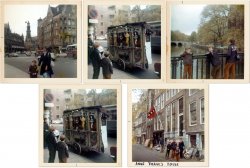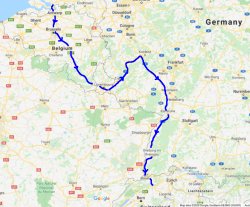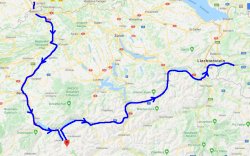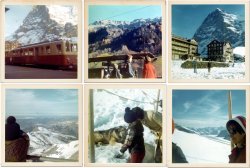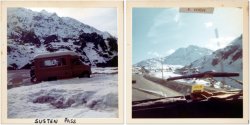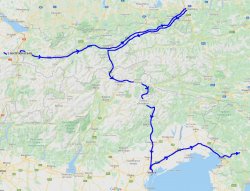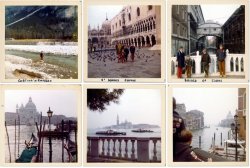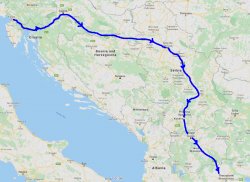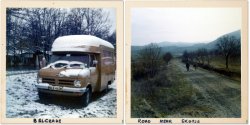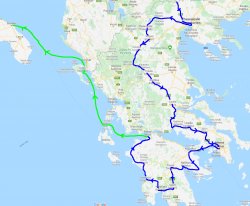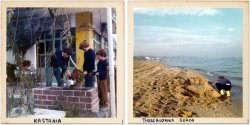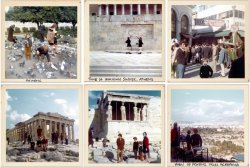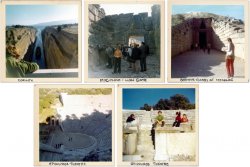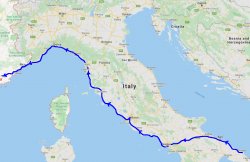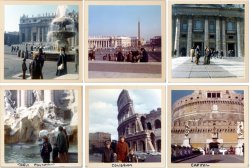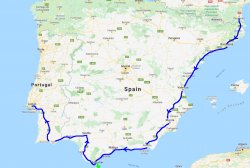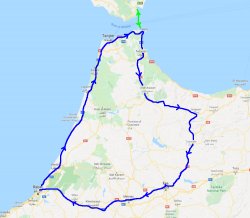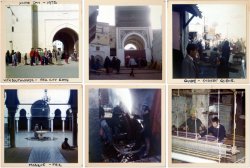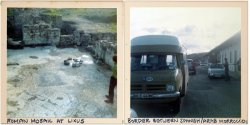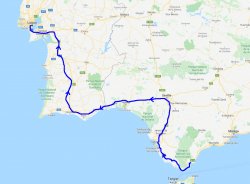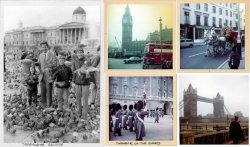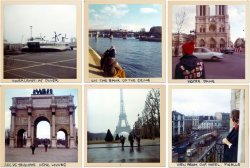- Joined
- Mar 26, 2017
- Posts
- 2,548
- Qantas
- LT Gold
- Virgin
- Gold
And a bit more on the trip report.
Looking back at my previous post I realised I hadn't put in a map, as well as mixing up where we jumped from Sweden to Denmark. It was a bit further south at Helsingborg. We stayed at Gothenburg.
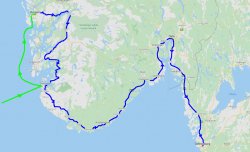
The total distance above is a just over 1000 kms, although not a straight run as you can imagine.
The next stage of the trip was to head down to Helsingborg, and get the ferry across to Denmark, landing at Helsingor.
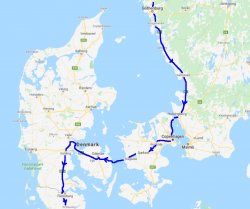
Our first stop was Helsingor, checking out the castle which is supposedly Hamlet's. We the headed down to Copenhagen and spent a few days there exploring the city and sights, such the the Little Mermaid.

The city had a nice pace to it, and of course after the crinkly bits of Norway, was very flat. We got around the usual challenges of currency exchanges, working out how to say the numbers 1 to 10, and what milk was called. Initially that was a challenge in Norway, where we went through versions of buttermilk and light cream in the supermarket, before getting it right.
From Copenhagen we headed west to Roskilde for the sights of the cathedral as well as the Viking Boat museum.

Then further on to Odense to visit the house of Hans Christian Andersen, and further to the west to Tredle Naes. From there we headed down to the border with Germany and stayed at Kollund.
We then crossed into Germany and headed across to Holland, passing through Hamburg and Bremen.
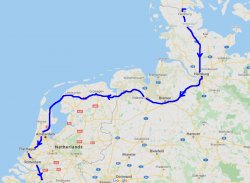
Looking back at my previous post I realised I hadn't put in a map, as well as mixing up where we jumped from Sweden to Denmark. It was a bit further south at Helsingborg. We stayed at Gothenburg.

The total distance above is a just over 1000 kms, although not a straight run as you can imagine.
The next stage of the trip was to head down to Helsingborg, and get the ferry across to Denmark, landing at Helsingor.

Our first stop was Helsingor, checking out the castle which is supposedly Hamlet's. We the headed down to Copenhagen and spent a few days there exploring the city and sights, such the the Little Mermaid.

The city had a nice pace to it, and of course after the crinkly bits of Norway, was very flat. We got around the usual challenges of currency exchanges, working out how to say the numbers 1 to 10, and what milk was called. Initially that was a challenge in Norway, where we went through versions of buttermilk and light cream in the supermarket, before getting it right.
From Copenhagen we headed west to Roskilde for the sights of the cathedral as well as the Viking Boat museum.

Then further on to Odense to visit the house of Hans Christian Andersen, and further to the west to Tredle Naes. From there we headed down to the border with Germany and stayed at Kollund.
We then crossed into Germany and headed across to Holland, passing through Hamburg and Bremen.










